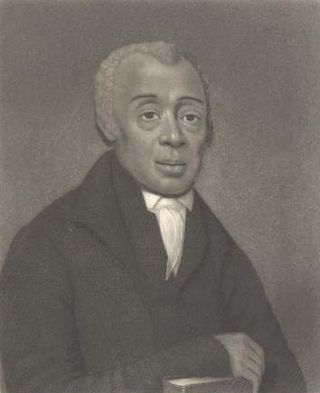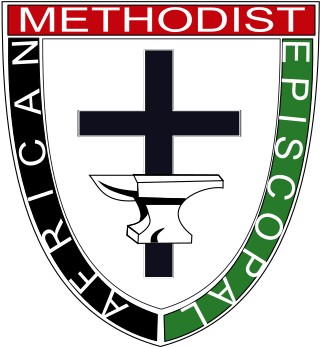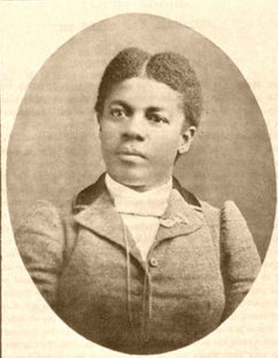
Richard Allen was a minister, educator, writer, and one of the United States' most active and influential black leaders. In 1794, he founded the African Methodist Episcopal Church (AME), the first independent Black denomination in the United States. He opened his first AME church in 1794 in Philadelphia.

The African Methodist Episcopal Church, usually called the AME Church or AME, is a Methodist Black church. It adheres to Wesleyan-Arminian theology and has a connexional polity. The first independent Protestant denomination to be founded by Black people, AME welcomes and has members of all ethnicities.

Ida Bell Wells-Barnett was an American investigative journalist, educator, and early leader in the civil rights movement. She was one of the founders of the National Association for the Advancement of Colored People (NAACP). Wells dedicated her career to combating prejudice and violence, and advocating for African-American equality—especially that of women.

The African Methodist Episcopal Zion Church, or the AME Zion Church (AMEZ) is a historically African-American Christian denomination based in the United States. It was officially formed in 1821 in New York City, but operated for a number of years before then. The African Methodist Episcopal Zion Church adheres to Wesleyan-Arminian theology.

Fanny Jackson Coppin was an American educator, missionary and lifelong advocate for female higher education. One of the first Black alumnae of Oberlin College, she served as principal of the Institute for Colored Youth in Philadelphia and became the first African American school superintendent in the United States.

Jarena Lee was the first woman preacher in the African Methodist Episcopal Church (AME). Born into a free Black family in New Jersey, Lee asked the founder of the AME church, Richard Allen, to be a preacher. Although Allen initially refused, after hearing her preach in 1819, Allen approved her preaching ministry. A leader in the Wesleyan-Holiness movement, Lee preached the doctrine of entire sanctification as an itinerant pastor throughout the pulpits of the African Methodist Episcopal denomination. In 1836, Lee became the first African American woman to publish an autobiography.

Jordan Winston Early was an American Methodist preacher who is considered to have contributed significantly to the spread of African American Methodism in the southern and western United States. In 1868, he married Sarah Jane Woodson Early, and the couple were prominent in spreading Methodism and black nationalism, with his wife teaching wherever he preached.

Julia A. J. Foote was ordained as the first woman deacon in the African Methodist Episcopal Zion Church and the second to be ordained as an elder. She was a leader in the Wesleyan-Holiness movement, preaching the doctrine of entire sanctification throughout pulpits of the African Methodist Episcopal Zion connexion.

Lena Doolin Mason was an American Methodist preacher and poet.

Katherine Davis Chapman Tillman was an American writer.
Martha Jayne Keys was an American Christian minister. She was the first woman to be ordained in the African Methodist Episcopal Church and was president of the West Kentucky conference branch for five years. She was also the author of a 1933 gospel drama, The Comforter.

Women of African descent have always been active in Christianity since the very early days of this religion. African-American women mainly worship in traditionally black Protestant churches, with 62% identifying themselves as historically black Protestants. Many hold leadership positions in these churches and some lead congregations, especially in the American deep south. Black women also have served as nuns in the Catholic Church in the United States since the early 19th Century.

Artishia Garcia Wilkerson Jordan was an American educator and clubwoman, based in Los Angeles.

Emma S. Connor Ransom was an American educator and clubwoman, active in the African Methodist Episcopal Church (AME) and the YWCA.

Leah Gaskin Fitchue, also known as Leah Gaskin White and Leah Gaskin Coles, was an American city official, professor of religious studies and college administrator. She was president of Payne Theological Seminary from 2003 to 2015.
Bertha Grant Higgins was an American suffragist, civil rights activist and clubwoman. She was involved in supporting women's suffrage in Rhode Island. She strongly supported the Dyer Anti-Lynching bill and worked towards equal rights for African Americans.
Harrel Gordon Tillman Sr. was an actor who became an ordained minister and moved to Houston Texas where he also became a lawyer and judge. He was the first African-American judge in Texas.

Bishop Singleton T. Jones was a religious leader in the African Methodist Episcopal Zion Church. When he was ten years old, he was apprenticed to a lawyer and worked for him for four years, after which he found positions at an inn, as a hod carrier, and on a riverboat on the Ohio River. He became a pastor in the 1840s, serving churches throughout Pennsylvania, New Jersey, Maryland, and the District of Columbia. Although he had little education, he taught himself to be an articulate orator. Besides being a pastor to churches, he also edited AME Zion publications, the Zion's Standard and Weekly Review and the Discipline.

Bishop Levi Jenkins Coppin was a minister of the African Methodist Episcopal Church, the editor of the AME Church Review, and one of the founders of the American Negro Academy.

















